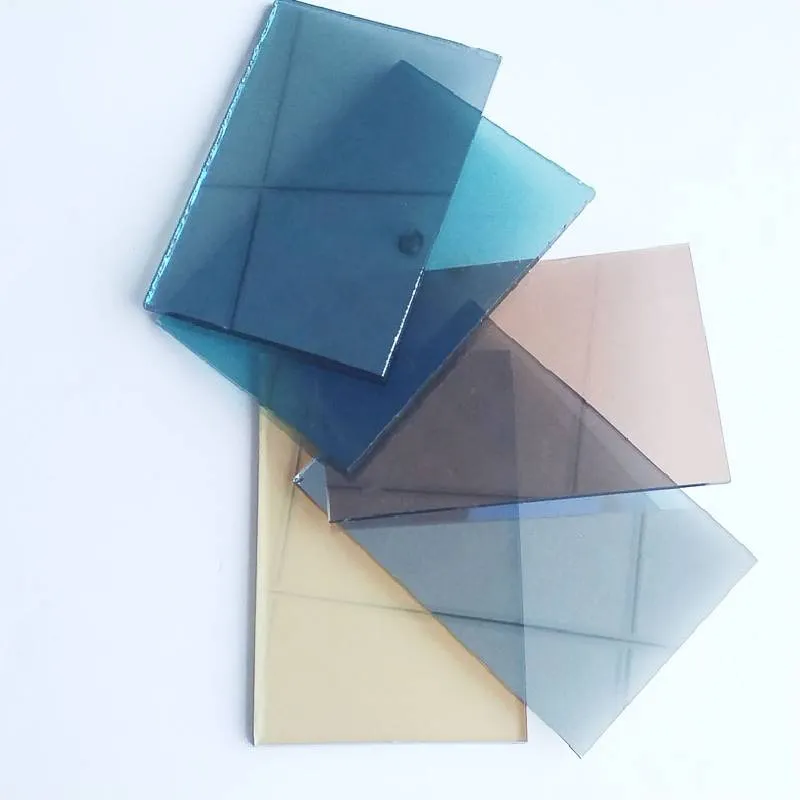The Versatility and Benefits of Tempered Glass
Tempered glass, also known as toughened glass, is a type of safety glass that has been processed by controlled thermal or chemical treatments to increase its strength compared to normal glass. This innovative product has increasingly become a popular choice for various applications, ranging from architectural designs to automotive windshields, due to its enhanced durability and safety features.
One of the key properties of tempered glass is its strength. It is approximately five to six times stronger than standard glass of the same thickness, making it a preferred choice for environments where safety and resistance to impact are vital. When broken, tempered glass shatters into small, blunt pieces that are less likely to cause injury. This characteristic is especially beneficial in environments such as shower doors, glass doors, and glass railings, where a break could result in serious injuries.
The Versatility and Benefits of Tempered Glass
In addition to its strength and thermal resistance, tempered glass offers excellent aesthetic properties. It can be produced in various sizes, shapes, and finishes, making it incredibly versatile for designers and architects. From skyscrapers to residential homes, tempered glass can be used to create stunning facades, expansive windows, and stylish partitions. The clarity and transparency of the glass also provide an unobstructed view, which can enhance the overall aesthetic appeal of a space while allowing natural light to flow in.
tempered glass used
Moreover, tempered glass is available in multiple designs and can be easily laminated or tinted. This not only adds to its aesthetic appeal but also provides extra benefits such as UV protection and privacy, depending on the specific needs of the project. Laminated tempered glass can further enhance safety by holding the shards together even when broken, preventing pieces from falling and reducing the risk of injury.
Sustainability is another important aspect of tempered glass. It is a recyclable material, which can significantly reduce waste in construction projects. By using tempered glass, builders can create eco-friendly structures that are not only efficient but also visually appealing. The energy efficiency of buildings can also be improved when using glass that is specially treated to reflect heat and reduce energy consumption for heating and cooling, contributing to lower operational costs and a reduced carbon footprint.
In terms of applications, the use of tempered glass is widespread. Beyond architecture, it plays a crucial role in the automotive industry, where it is commonly used for side and rear windows. Its ability to withstand impact and breakage makes it an ideal choice for car manufacturers looking to ensure passenger safety. Furthermore, in the electronics industry, tempered glass is often utilized for screens and displays, providing durability and resistance to scratches and cracks.
In conclusion, tempered glass is a remarkable material that encompasses strength, safety, aesthetic appeal, and sustainability. Its applications are vast and varied, making it a preferred choice in numerous industries. As technology continues to advance, the production and capabilities of tempered glass are likely to expand even further, paving the way for innovative solutions that enhance both safety and design in our everyday lives. With its unique properties, tempered glass firmly establishes itself as a crucial component in modern construction and design, highlighting its importance in both functional and artistic capacities.
 Afrikaans
Afrikaans  Albanian
Albanian  Amharic
Amharic  Arabic
Arabic  Armenian
Armenian  Azerbaijani
Azerbaijani  Basque
Basque  Belarusian
Belarusian  Bengali
Bengali  Bosnian
Bosnian  Bulgarian
Bulgarian  Catalan
Catalan  Cebuano
Cebuano  Corsican
Corsican  Croatian
Croatian  Czech
Czech  Danish
Danish  Dutch
Dutch  English
English  Esperanto
Esperanto  Estonian
Estonian  Finnish
Finnish  French
French  Frisian
Frisian  Galician
Galician  Georgian
Georgian  German
German  Greek
Greek  Gujarati
Gujarati  Haitian Creole
Haitian Creole  hausa
hausa  hawaiian
hawaiian  Hebrew
Hebrew  Hindi
Hindi  Miao
Miao  Hungarian
Hungarian  Icelandic
Icelandic  igbo
igbo  Indonesian
Indonesian  irish
irish  Italian
Italian  Japanese
Japanese  Javanese
Javanese  Kannada
Kannada  kazakh
kazakh  Khmer
Khmer  Rwandese
Rwandese  Korean
Korean  Kurdish
Kurdish  Kyrgyz
Kyrgyz  Lao
Lao  Latin
Latin  Latvian
Latvian  Lithuanian
Lithuanian  Luxembourgish
Luxembourgish  Macedonian
Macedonian  Malgashi
Malgashi  Malay
Malay  Malayalam
Malayalam  Maltese
Maltese  Maori
Maori  Marathi
Marathi  Mongolian
Mongolian  Myanmar
Myanmar  Nepali
Nepali  Norwegian
Norwegian  Norwegian
Norwegian  Occitan
Occitan  Pashto
Pashto  Persian
Persian  Polish
Polish  Portuguese
Portuguese  Punjabi
Punjabi  Romanian
Romanian  Russian
Russian  Samoan
Samoan  Scottish Gaelic
Scottish Gaelic  Serbian
Serbian  Sesotho
Sesotho  Shona
Shona  Sindhi
Sindhi  Sinhala
Sinhala  Slovak
Slovak  Slovenian
Slovenian  Somali
Somali  Spanish
Spanish  Sundanese
Sundanese  Swahili
Swahili  Swedish
Swedish  Tagalog
Tagalog  Tajik
Tajik  Tamil
Tamil  Tatar
Tatar  Telugu
Telugu  Thai
Thai  Turkish
Turkish  Turkmen
Turkmen  Ukrainian
Ukrainian  Urdu
Urdu  Uighur
Uighur  Uzbek
Uzbek  Vietnamese
Vietnamese  Welsh
Welsh  Bantu
Bantu  Yiddish
Yiddish  Yoruba
Yoruba  Zulu
Zulu 

